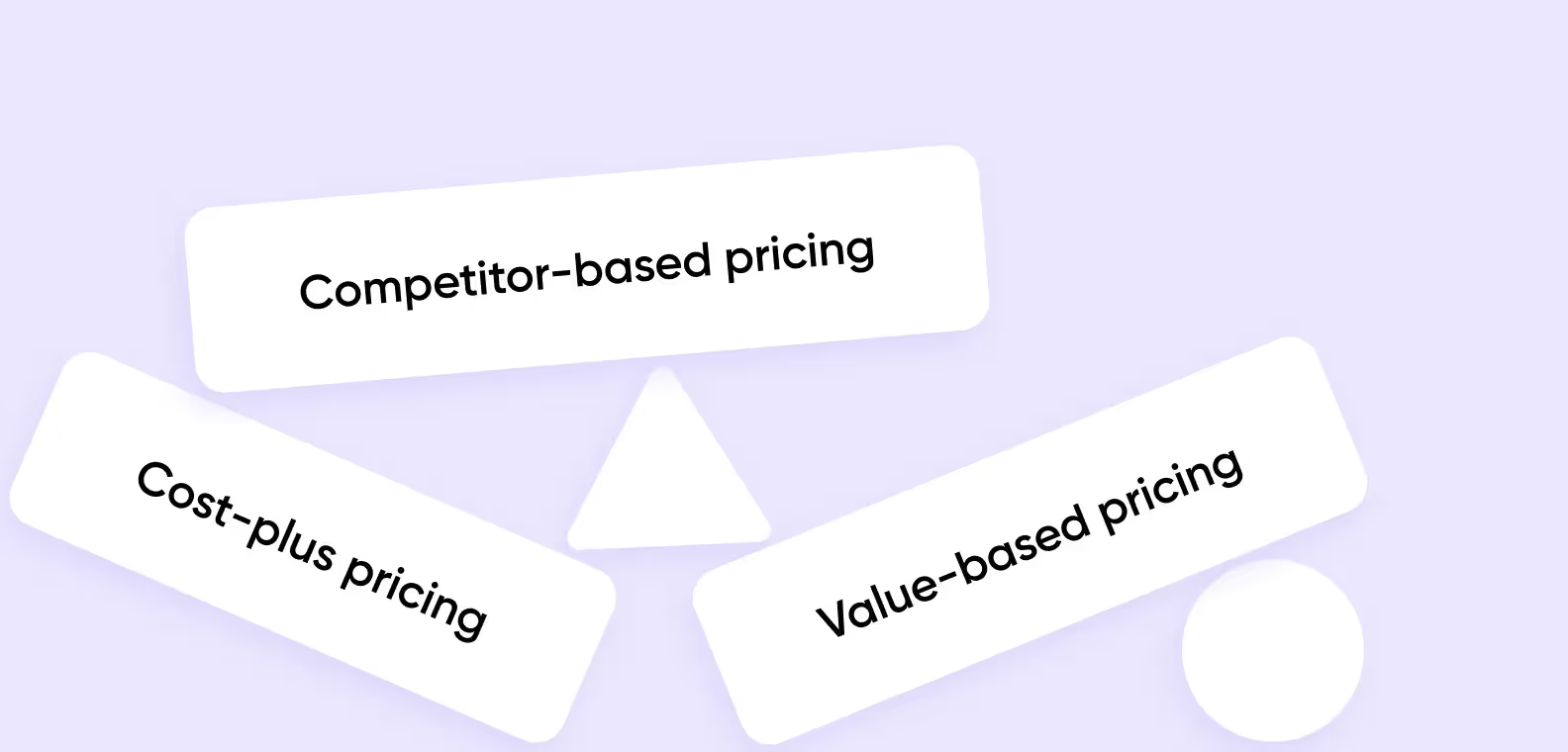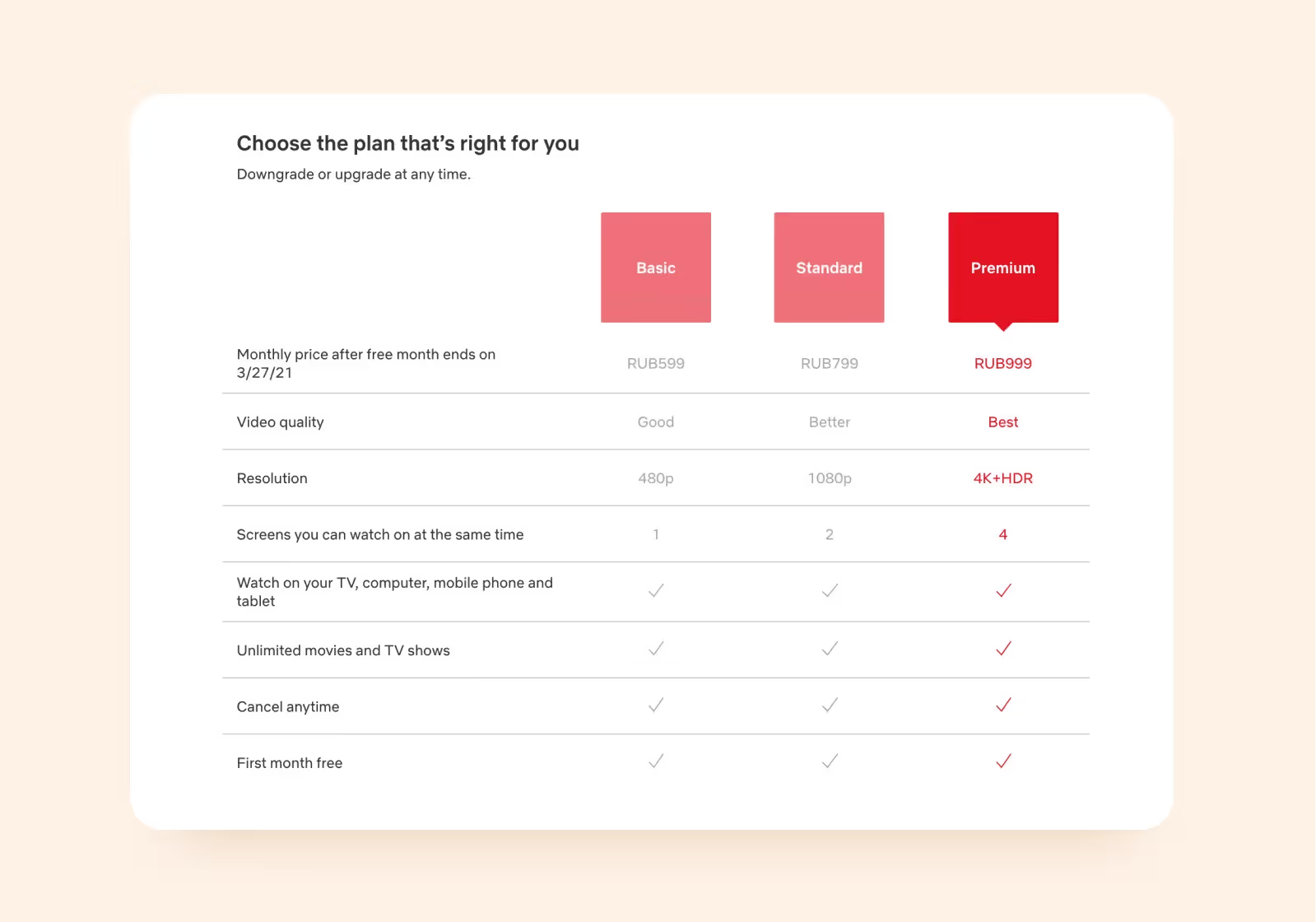


You have spent months designing your product with a software development company for startups and now, it is time for it to generate revenue. You can provide space for advertisement, enable in-app purchases, or charge a subscription fee. While in-app advertisements and purchases are suitable only for certain types of apps, for example, mobile games using a subscription model is quite universal.

However, how do you determine the subscription price that also allows your company to benefit? You can’t just make a wild guess. In this post, we will share with you some tips.
To help you come up with your own subscription price, let’s dive into three common strategies subscription companies use to define their pricing: cost-plus pricing, competitor-based pricing, and value-based pricing.

This approach invites you to sum up all costs to develop an app and produce content and add up some percentage to it.
For example, when you buy apples in a store, you pay much more than it costs to produce them. However, the supplier and the store add a fixed percentage on top of the apples’ costs.
At first glance, it seems like a perfect approach. You will pay off all the costs! However, is it a good approach for app monetization? Mostly, not really. In software development, the cost to provide a user with an account is rather low. At the same time, the value that the customer will get from this account can be pretty high.
Customers do not care how much it costs you to develop a product. If they find your product useful — they will pay for it, if not — c’est la vie. How do you determine a value-based subscription price? Conduct surveys and field research asking people what they are ready to pay to use your application.
The disadvantage of this approach is the time and effort you will have to put into finding out the price. You will have to invite people to your office, and collect, and analyze their answers. However, the result will be much more true to life.
If you look at the prices of your rivals, it will help you. You will know how to determine a reasonable subscription price. Knowing what’s offered on the market, you can provide a discount to attract more customers or add a pleasant bonus to increase the value.
This approach is simple and can be used by a startup. However, if you are offering a much better product than your competitors, you shouldn’t allow yourself to get tied by their prices.
Now, let us see how to determine subscription prices using special techniques and tools.
Field research when you ask customers about how much they are willing to pay for your services is one of the classic methods to establish a price. You can use time-tested frameworks to guide you. We briefly explain to you each of these methods, so you know what to look up on the Internet.
The essence of the Gabor-Granger technique is to use surveys to estimate whether the respondents would buy the product for this or that price.
This technique allows you to investigate the price sensitivity of the target audience: what prices they see as too cheap or too expensive.
How do you determine subscription price if you enter a new market? Take the value of your brand and other players on the market into account.
To sum up, every situation is unique, and it is up to you what technique to use based on your niche and time/money restraints.
If you can’t or don’t want to work with focus groups, you can concentrate on how to determine subscription prices using market research. Business intelligence tools enable you to extract information about target markets, customers, and marketing efforts.
Data analytics allows you to see the objective picture and not just rely on your guts. Top competitor price monitoring tools are:

Sometimes, letting users choose between different options is great — they feel more free paying only for the functionality they want to have. There are usually at least three different tiers: Basic, Optimal, and Premium. If your product contains many features, you can introduce more tariffs.
For example, a social network for professionals LinkedIn offers Basic and Premium tiers for its users. If you want to get many connections (be able to send unlimited messages and offers to new people), subscribe to a Premium plan. The platform offers different tiers for individuals and companies that are trying to generate leads.
Annual plans often have better active usage and retention than monthly plans. The individual makes a bigger investment in the product upfront, so they’re more invested in the overall product. To motivate the users, you can offer 15-20% discounts or a short trial period (1-2 months). New York Times and many other magazines that have gone digital offer users an annual subscription. The quality of materials published in the newspaper is beyond any doubt, but anyone can still access them on their website. However, having subscribed, users can get access to an unlimited number of articles, videos, and podcasts. What motivates the choice of the annual subscription for NYT is its low price ― basic subscription costs just $3 a month. Also, the majority of people want to be aware of what is going on in the world all the time, not just one month in a year. It makes more sense for both the company and the reader to charge it in a lump sum.

Freemium won’t allow you to earn millions but it’s a good customer acquisition strategy. If you are a young company, people don’t know whether they can trust you. You need to offer a really good customer experience to show people what they are paying for. In this case, using freemium can be very beneficial.
Netflix has three pricing tiers: Basic, Standard, and Premium. Every new user can enjoy the Standard tier for 1 month for free so that they get access to all the possibilities of the platform.
Using a Standard and not a Basic or Premium tier for freemium is a smart move:
Netflix has great features such as the possibility to change the languages of the audio, subtitles, description audio for people with vision impairment, and a recommendation system. Its interface is also very attractive, this is how Netflix ‘hooks’ people.
Therefore, don’t be afraid to offer a short trial period! Even the top players in the market do that.
Establishing a reasonable price is important if you want to keep your company afloat and make a profit. Don’t try to guess how to determine the subscription price but talk to the customers and study the market applying data analytics tools. Most importantly: be flexible in your pricing strategies and don’t be afraid to experiment with different pricing tiers and freemium policies.